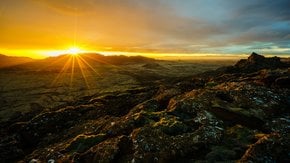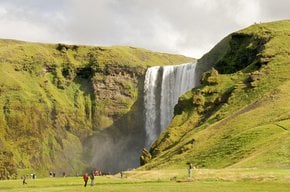Winter in Iceland 2025-2026
Despite dark and cold weather this season has its benefits—Northern Lights and Christmas illumination
Best time: November–March
Iceland's winter is milder than one might think. The days are either warm, windy and rainy or cold, sunny and still. If you’re lucky, you’ll catch both. The highlands tend to be a lot colder than the lowlands. While in the lowlands the temperature is still above zero, the highlands are already freezing. The daylight shortens every day until the winter solstice in December. Because the nights are longer and the sky is often clear it’s already possible to spot the Northern Lights from mid-November. Make sure to wear warm clothing. A warm coat, gloves, a scarf and a hat will do.
January is the wettest month in Iceland, although it rains a lot during other winter months too. The period between December and February is the darkest time in Iceland, the daylight lasts only for about four or five hours. But it’s compensated by the Christmas illumination. And the aurora borealis gets more frequent during these months. It’s also the best time for tours to the natural glacier ice caves with spectacular blue ice and for enjoying the pools with hot thermal water.
In the Northern part, there’re also a few well-equipped ski resorts. And since Iceland isn’t always covered with snow because it tends to melt sometimes and then appear again, you can experience some wonderful contrast of colours.
























